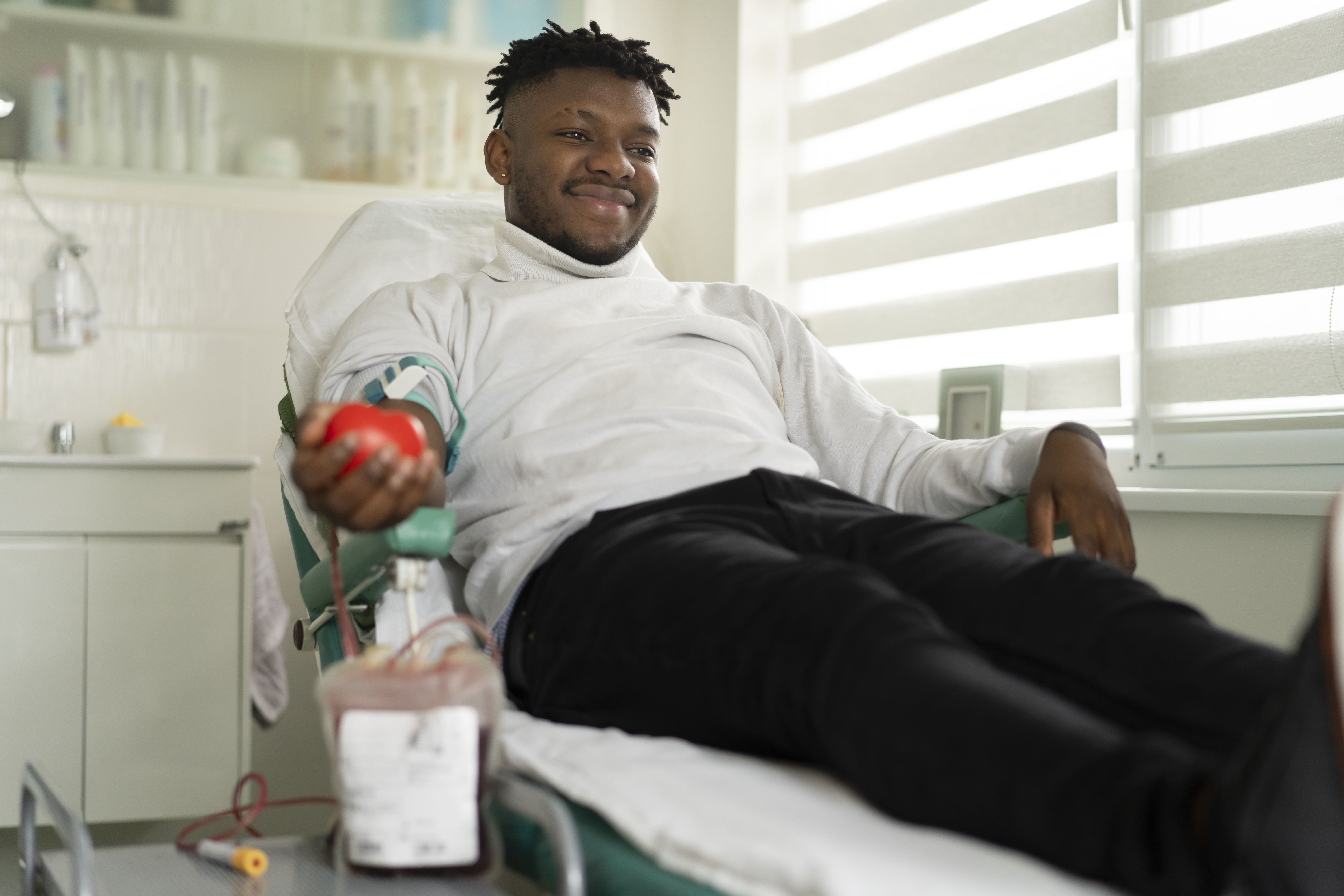Here’s how donating blood impacts your community
The month of January is National Blood Donor Month. It’s an annual celebration that highlights how much this act of service can impact and help others. Historically, January is when blood donation has been needed most. The American Red Cross notes that the winter months can bring critical blood shortages. Typically, the steep drop in donations happens because of the holidays.
Transportation can add another challenge, especially in places with harsh winters and snow. Many individuals get sick around this time of year, too, which also makes it difficult to donate. So if you’re able to, it’s worth the extra effort to donate in January.
But it’s always a good time to donate blood, especially given how much your donation can impact members of your community:
- In the U.S., approximately 29,000 units of red blood cells are needed every day.
- Someone needs blood or platelets every two seconds.
- A car accident victim can require as many as 100 units of blood.
- Blood and platelets can only come from volunteer donors.
- One donation can help save more than one life.
- Many cancer patients need blood transfusions, sometimes daily, during chemotherapy treatment.
- Babies born early may need a blood transfusion to increase the number of red blood cells in their bodies.
- Transfusions of plasma, which is found in blood, help heal bad infections, serious burns, or liver failure.
Giving blood can also boost your health. According to a study in the American Journal of Epidemiology, blood donation can help reduce iron in your system. This can improve cardiovascular function. In that research, people who donated blood had an 88% lower risk of experiencing a heart attack.
Plus, you’ll feel good knowing you’ve made a difference. A survey of more than 5,000 blood donors found that nearly 75% of donors give blood to help others. As a result, they feel more connected to their communities.
Responding to rare blood type needs
Most blood types fall into groups A, B, AB, or O. But some people have rare blood types that are difficult to match, so it’s essential to maintain a diverse blood supply. Blood transfusions are used in accidents and ongoing treatments. For example, people with sickle cell disease often need transfusion therapy.
The best blood type match for patients with rare blood types often comes from donors of the
same race or similar ethnicity. The American Red Cross notes that although blood is matched by type, patients are at lower risk of developing complications from transfusions if their donor matches their race and ethnicity.
How to donate
If you’re ready to make a resolution to give blood during National Blood Donor Month, you can schedule an appointment at the Mass General Blood Donor Center or the Kraft Family Blood Donor Center at Dana-Farber Cancer Institute and Brigham and Women’s Hospital.
You can also check out this blood donation site, which will help you find a donation site close by. Once you find a place, it helps to call ahead or visit their website to schedule an appointment. Finally, you can always visit the American Red Cross’s website.
